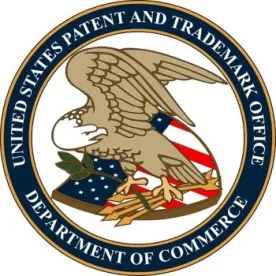On June 7, 2018, the USPTO issued new guidance in the form of a memorandum regarding the patentability of methods of treatment. This memorandum, issued in response to the Federal Circuit’s holding in Vanda Pharmaceuticals Inc. v. West-Ward Pharmaceuticals, 887 F.3d 1117 (Fed. Circ. 2018), emphasizes that patent claims directed towards methods of treatment may be found to satisfy 35 U.S.C. § 101 without requiring a showing of “nonroutine or unconventional steps” under the analysis prescribed by Alice and Mayo.
A representative claim at issue in Vanda is presented below, with emphasis added by the USPTO:
A method for treating a patient with iloperidone, wherein the patient is suffering from schizophrenia, the method comprising the steps of:
determining whether the patient is a CYP2D6 poor metabolizer by:
obtaining or having obtained a biological sample from the patient; and
performing or having performed a genotyping assay on the biological sample to determine if the patient has a CYP2D6 poor metabolizer genotype; and
if the patient has a CYP2D6 poor metabolizer genotype, then internally administering iloperidone to the patient in an amount of 12 mg/day or less, and
if the patient does not have a CYP2D6 poor metabolizer genotype, then internally administering iloperidone to the patient in an amount that is greater than 12 mg/day, up to 24 mg/day,
wherein a risk of QTc prolongation for a patient having a CYP2D6 poor metabolizer genotype is lower following the internal administration of 12 mg/day or less than it would be if the iloperidone were administered in an amount of greater than 12 mg/day, up to 24 mg/day.
The key steps in this claim include “determining” with a genotyping assay and “administering” a discrete quantity of a drug based on that determination in order to “treat a particular disease.” In distinguishing Mayo, the Federal Circuit noted that, while the inventors recognized the relationships between the drug and a patient’s metabolic responses, they actually “claimed an application of that relationship.” Vanda, 887 F.3d at 1135. Accordingly, the claims were “directed to a method of using iloperidone to treat schizophrenia” rather than a judicial exception and were therefore patent eligible under the first step of the Alice/Mayo framework. Id.
In analyzing this holding, the USPTO points to a number of key takeaways for its examiners. First, it notes that the Federal Circuit evaluated the claims as a whole, including those portions that are directed to arguably conventional genotyping and treatment steps, in determining that the claim was not “directed to” the relationship between a patient’s genotype and the risk of QTc prolongation itself.
Second, the Federal Circuit emphasized that Mayo, despite including an “administering” step, did not actually involve a method of treatment claim. Rather, the claim in Mayo was directed to gathering data about biological relationships, i.e., it was directed to diagnostics rather than to treatment. Indeed, the Supreme Court specifically identified method of treatment claims as not being implicated by Mayo and Myriad because methods of treatment “confine their reach to particular applications” of the key biological relationship. Id.
Finally, the USPTO points out that the Federal Circuit did not consider whether the treatment steps themselves were routine or conventional when making its determination. Rather, because the claim is “directed to” patentable subject matter under the first Alice/Mayo step, it never reached this question under the second Alice/Mayo step. Accordingly, the nature of the steps themselves should not be of concern as far as patentable subject matter is concerned. Of course, this is not to say that routine or conventional treatment steps may not face later challenges on the basis of obviousness or anticipation.
While neither Vanda nor the USPTO memorandum is likely to provide any solace to those who desire patent protection for diagnostic methods, both indicate that claims directed to methods of treatment may be more well received both at the USPTO and in the district courts. This is particularly good news for researchers and would-be patentees in the field of personalized medicine, as advancements in this field are often predicated on the application of newly discovered biological relationships. Such applications, at least in the first instance, are now more likely to be found patent eligible.




 />i
/>i

